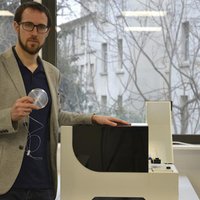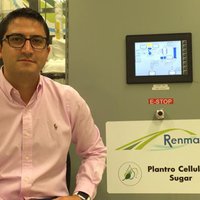Energy & sustainability
Kelly Sanders
A researcher in drought-ridden California tries to better account for the ways we use water.
Photo by Damon Casarez

Europe
Clémentine Chambon
Sustainable, miniature power stations that provide electricity to the neediest communities

Europe
Vincent Bryant
A new weapon against climate change: an inexpensive, standardized system that analyzes the energy consumption of buildings

Europe
Laurent Boitard
Revolutionizing research with bacterial colonies grown in water drops

Latin America
Danilo Alberto Cantero Sposetti
His reactor that obtains sugars from cellulose could allow biomass to substitute petroleum
